The sea on fire, record-breaking floods and a heat dome: The biggest climate crisis moments of 2021
The year wealthy nations woke up to the living nightmare of global environmental breakdown
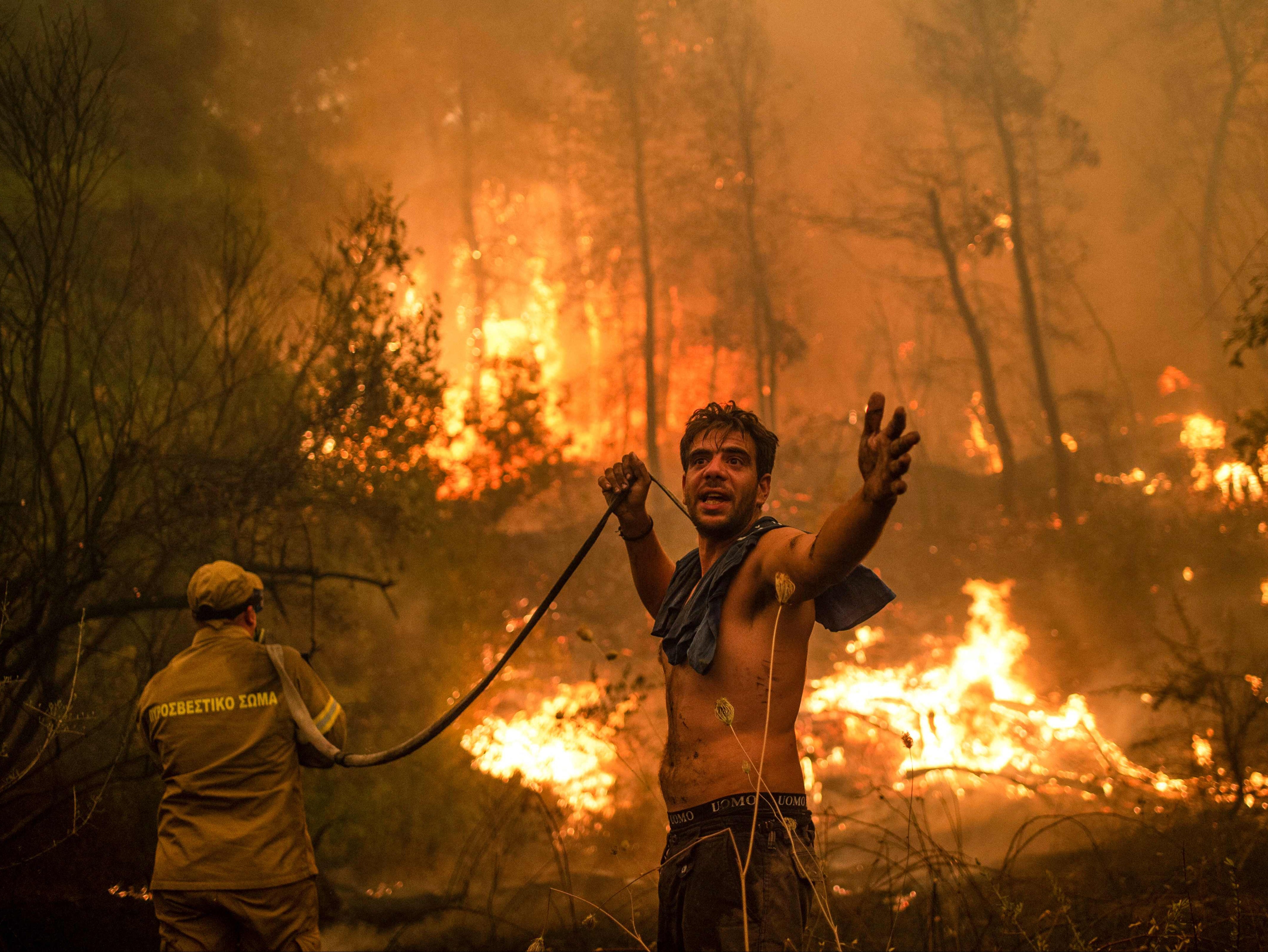
Your support helps us to tell the story
From reproductive rights to climate change to Big Tech, The Independent is on the ground when the story is developing. Whether it's investigating the financials of Elon Musk's pro-Trump PAC or producing our latest documentary, 'The A Word', which shines a light on the American women fighting for reproductive rights, we know how important it is to parse out the facts from the messaging.
At such a critical moment in US history, we need reporters on the ground. Your donation allows us to keep sending journalists to speak to both sides of the story.
The Independent is trusted by Americans across the entire political spectrum. And unlike many other quality news outlets, we choose not to lock Americans out of our reporting and analysis with paywalls. We believe quality journalism should be available to everyone, paid for by those who can afford it.
Your support makes all the difference.For a long time, terms such as “global warming”, or “climate change”, have seemed to refer to a remote, somewhat abstract, issue for many populations – particularly those in wealthy nations.
Even as the rhetoric for describing the collapse of our planet’s weather systems has ratcheted up, with scientists deploying terms such as “climate crisis”, and “environment emergency”, to try to drive home the scale of the issue, the warnings have largely been regarded as being for the future.
The first wave of serious warnings about the climate and mankind’s role in destabilising it came in the mid-20th century. But over 70 years later, many governments and businesses are still resisting pressure to rein-in the climate-altering greenhouse gases which are causing the problem.
As the impacts of the climate crisis have worsened over recent decades, public awareness of the unfolding calamities has risen slightly, but it has not kept pace with the scientific measurements. There has been a powerful disconnect between the plight of the natural world and our species’ place in it.
Sea levels are rising faster, sea ice is melting faster. Powerful storms are becoming more frequent, wildfires are consuming ever larger areas, and flooding is worsening.
While disaster in developing nations is routinely categorised in the collective public consciousness as unexceptional, 2021 may go down as the year wealthy nations woke up to the fact that the climate crisis is a major threat to them too.
Suddenly, it seems, extreme weather is affecting swathes of rich people, and with this change, the climate crisis has now arrived in the West.
No single extreme weather event is entirely attributable to the climate crisis, however the rising frequency and scale of disasters fit a pattern which scientists have said is in keeping with rising average global temperatures and the worsening climate crisis.
But even bearing that in mind, 2021 appeared apocalyptic, setting the alarm bells ringing louder and louder, with the World Meteorological Organisation stating in June, that “2021 is a make-or-break year for climate action, with the window to prevent the worst impacts of climate change – which include ever more frequent more intense droughts, floods and storms – closing rapidly.”
Here’s what happened:
8 January: Met Office warns atmospheric carbon to soar
The year’s climate news kicked off with a grim warning from the UK’s Met Office that the level of atmospheric carbon was on course to soar 50 per cent above what it was in the pre-industrial era, and exceed 417 parts per million (ppm). This proved to be the case as in June US authorities recorded highs of over 420ppm. It had taken over 200 years of industrialisation – until 1986 – for levels to rise 25 per cent higher. It took little over 30 years to double this.
9 January: Record-breaking snowfall, Madrid
An unusual and persistent blizzard, brought by Storm Filomena blanketed large parts of Spain with snow, cutting off hundreds of roads, leaving four people dead, and trapping thousands in cars or at train stations and airports forced to suspend services.

The capital, Madrid, recorded its heaviest snowfall in 50 years, and called in the military to rescue people from vehicles trapped on everything from small roads to the city’s major thoroughfares.
19 January: Storm Christoph UK
Hundreds of homes across the north and west of the UK were flooded and thousands evacuated during one of the wettest three day periods (from 18 - 20 January) ever recorded in the UK.
The flooding caused by the storm is a harbinger of worsening “climate shocks” in the UK, the chair of the Environment Agency, Emma Howard Boyd, told The Independent.
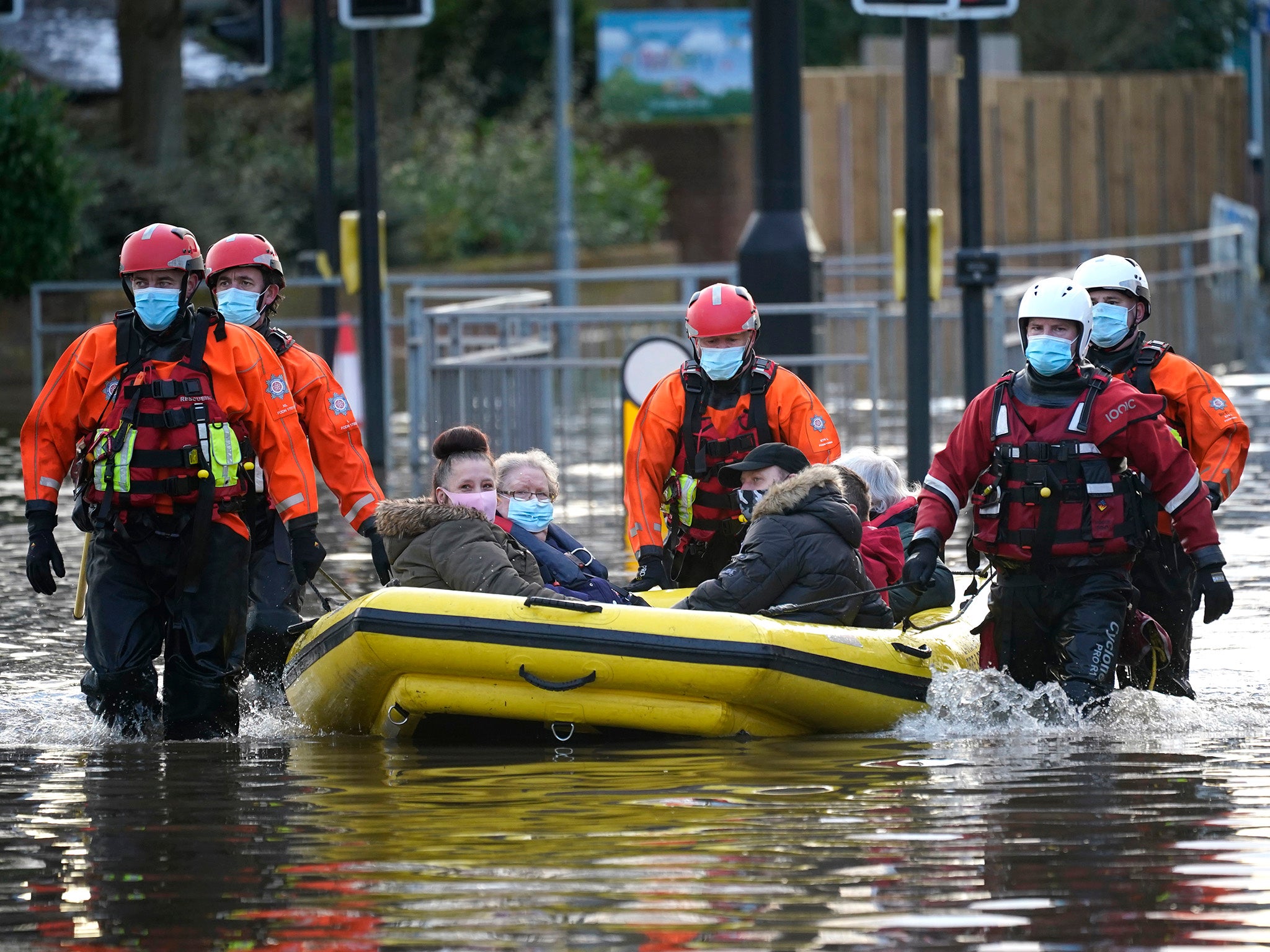
7 February: Himalayas rock and ice avalanche
An avalanche of rock and ice set off the chain of events that severely damaged two hydropower plants and left more than 200 people dead or missing in Uttarakhand, in India.
Subsequent research suggested the climate crisis had played a significant role, with scientists saying the retreat of glaciers “can destabilise the mountain flanks and alter the hydrological, thermal and stress regimes of underlying rock”.
9 February: Air pollution kills 1 in 5 globally
Air pollution from fossil fuels could account for nearly one in five deaths around the world, a study published in Environmental Research concluded.
The scientists found the pollution from fossil fuel burning accounted for around 10 million premature deaths in 2012, with the largest number of lives cut short in China and India.
31 January: Tropical Cyclone Ana hits Fiji
One of three tropical cyclones which hit Fiji at the end of January one after the other, tropical cyclone Ana killed one person, forced tens of thousands to evacuate and left millions of pounds of damage.
13-17 February: Texas snowstorm
Over 2.5 million people were left without power after blizzards swept across the US, with Texas particularly hard hit, with the weather conditions shutting down the state’s fragile energy infrastructure.
Extraordinary satellite images revealed how the massive snowstorm blanketed more than 70 per cent of the US in snow, the widest coverage in at least 17 years.
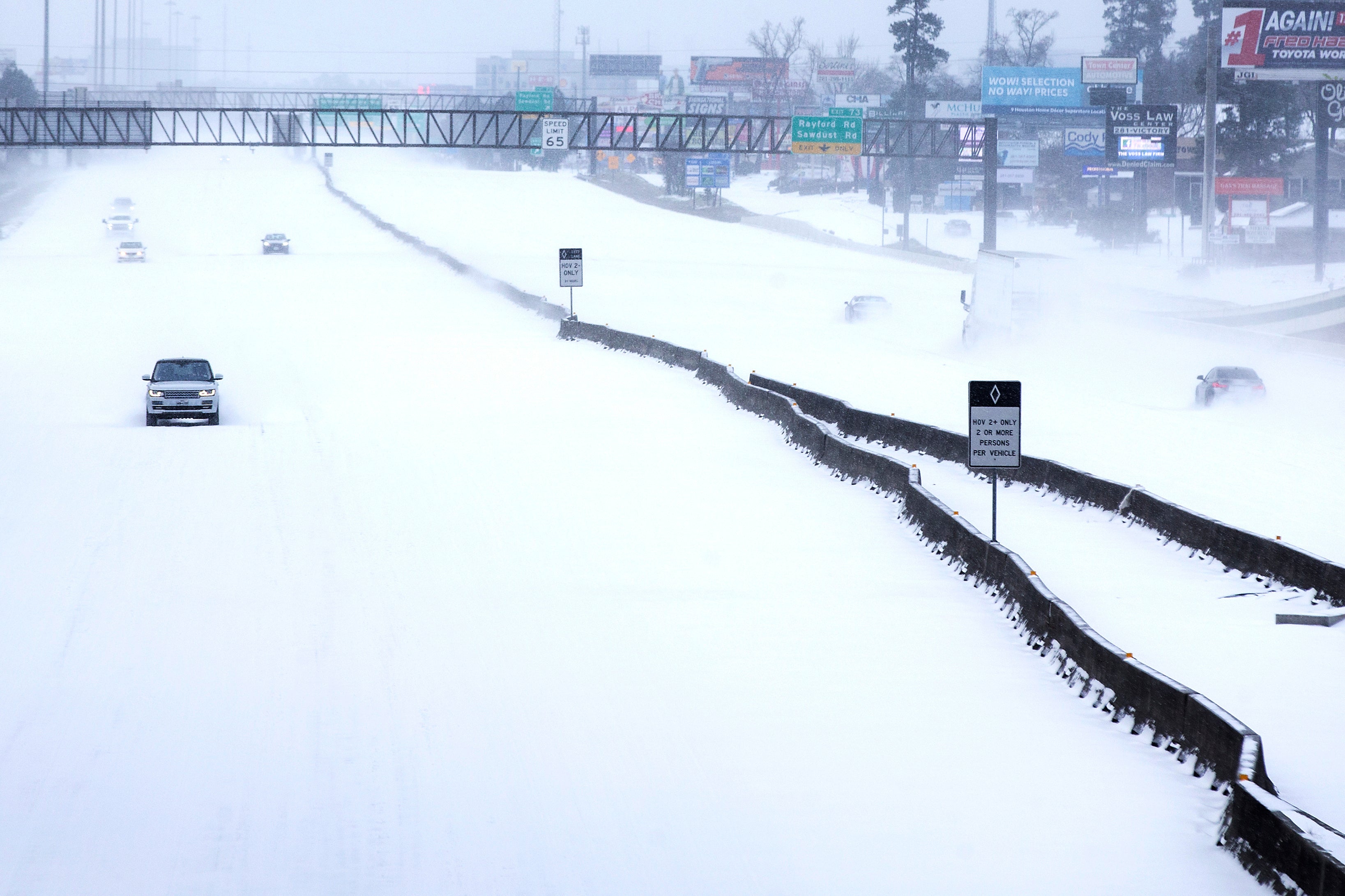
In total, the storm left at least 223 people dead across the United States, with 210 of them in Texas, however subsequent estimations have put the death toll at over 700.
Despite the freezing conditions, a conspiracy theory emerged suggesting the snow was actually “fake” and “government generated” as part of a sinister plot instigated by shadowy “elites” to destabilise the country.
During a tour to build support for tackling the environment emergency, US climate envoy John Kerry warned UK ministers to cut emissions amid growing international concern over plans for a major new coal mine in Cumbria.
Months ahead of the Cop26 climate summit Mr Kerry described coal as the “dirtiest fuel in the world”, and urged action from the world’s biggest polluters, including the UK, to take action.
Eight months before hosting Cop26, Boris Johnson announced plans to cut duty paid by passengers on domestic flights, in a move critics said showed the UK government was “making a mockery of our climate commitments”.
15 March: Beijing hit by record dust storm
Hundreds of flights were cancelled, schools closed and air quality reached dangerous levels as the “worst sandstorm in a decade” hit the Chinese capital, with some describing it as “life-threateningly bad”.
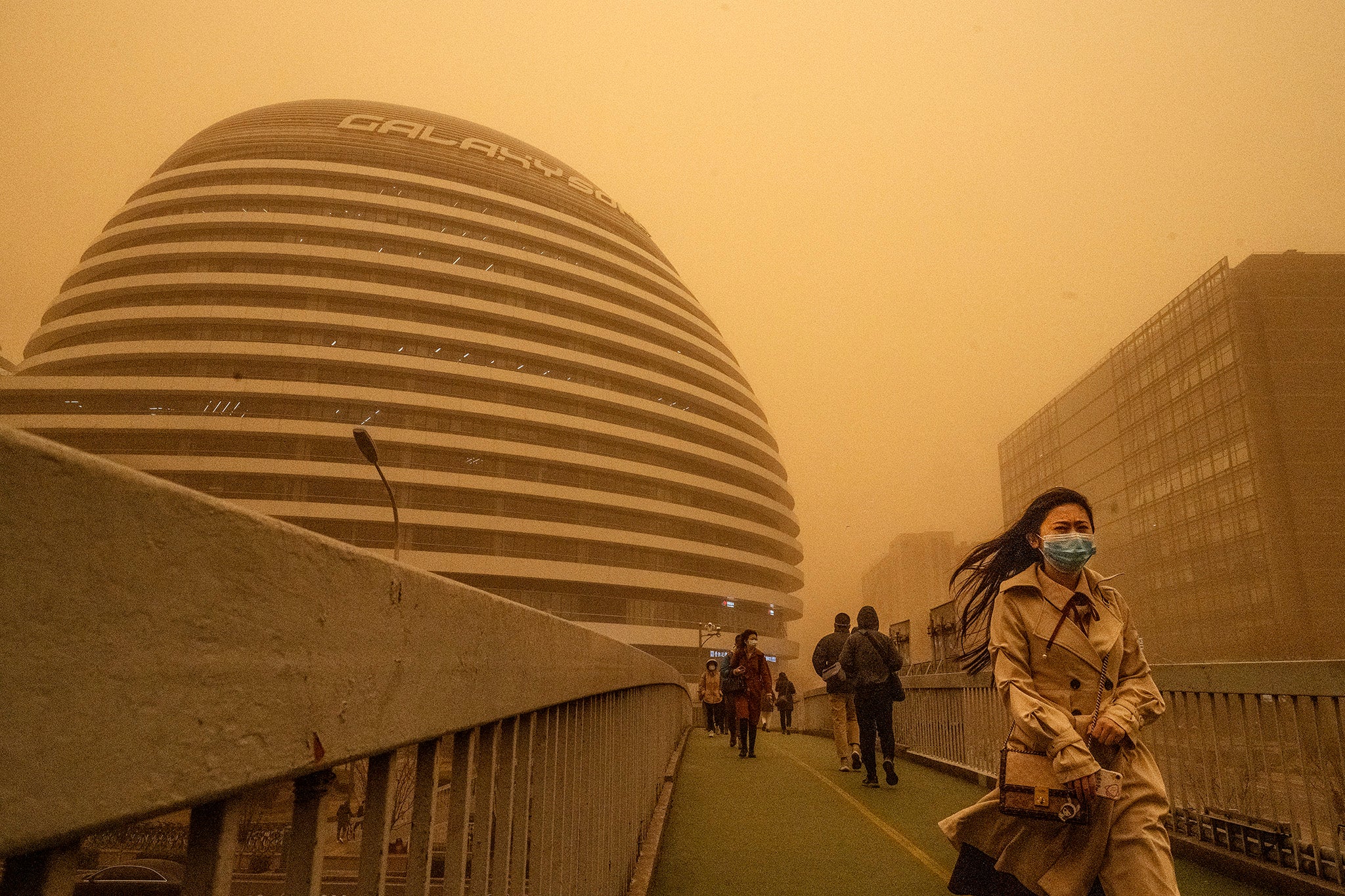
At the end of March, New South Wales’s premier, Gladys Berejiklian said the state was experiencing a “deep-seated, extreme weather event” after massive storms swept the east coast of Australia, causing the Warragamba Dam to spill over and forcing thousands to evacuate and millions of Sydney residents to shelter in their homes.
To add to the carnage, a mini-tornado ripped through a western suburb of Sydney, damaging about 30 homes and cutting power for thousands.
Tropical Cyclone Seroja was a deadly tropical cyclone that brought historic flooding and landslides to areas in southern Indonesia and East Timor and subsequently made landfall in Western Australia’s MidWest. Over 150 people were killed in Indonesia, with landslides and flash floods forcing at least 22,000 people to evacuate their homes. In Australia, over 70 per cent of the buildings in the town of Kalbarri were damaged, and thousands were left without electricity and water, in what Western Australia premier Mark McGowan said was the worst cyclone to hit the country “in decades”.
Scientists, conservationists, environmental organisations and human rights NGOs were among the groups backing calls for a boycott of London’s Science Museum’s new exhibition on the climate crisis because of its sponsorship by Shell.
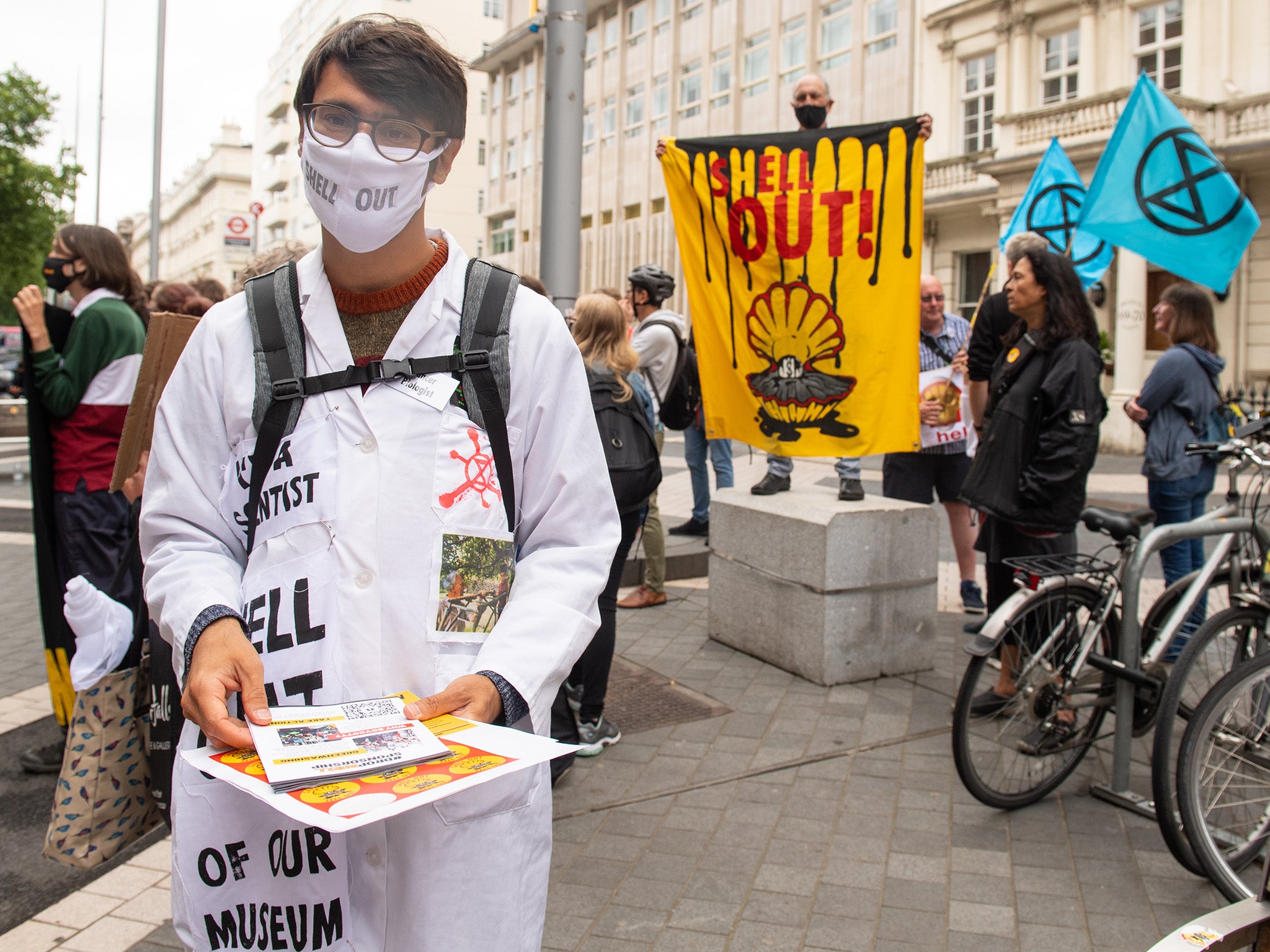
Groups including Extinction Rebellion, Greenpeace and Global Witness all supported the boycott, with activists describing the deal as “brazen greenwashing”, and a board member at the museum stepped down over the controversy.
A “mind-boggling” heat wave in the Arctic broke temperature records in north-west Russia, meteorologists said.
Last Wednesday, the mercury rose above 30C in parts of the Arctic, significantly above the average for the time of year.
Late June – early July: Once in a millennium heat dome
All time temperature records were totally rewritten across much of North America and Canada as an extreme “heat dome” formed, breaking records on consecutive days as the heat climbed, reaching over 50C.
Scientists said the phenomenon was a 1,000-year weather event, made 150 times more likely by the climate crisis.
In Canada the town of Lytton hit 49.6C on 29 June. The following day 90 per cent of the town was destroyed by raging wildfires, in which two people were killed.
In the US, parts of California hit highs of 49C, while readings in Washington state hit 50.5C.
It was the deadliest weather event in Canadian history with around 1,000 deaths directly linked to the heatwave. In the US, around 450 people are thought to have died due to the extreme temperatures.
US scientists said according to existing meteorological science, the heatwave “is basically impossible”, and told reporters: “We are entering uncharted territory.”
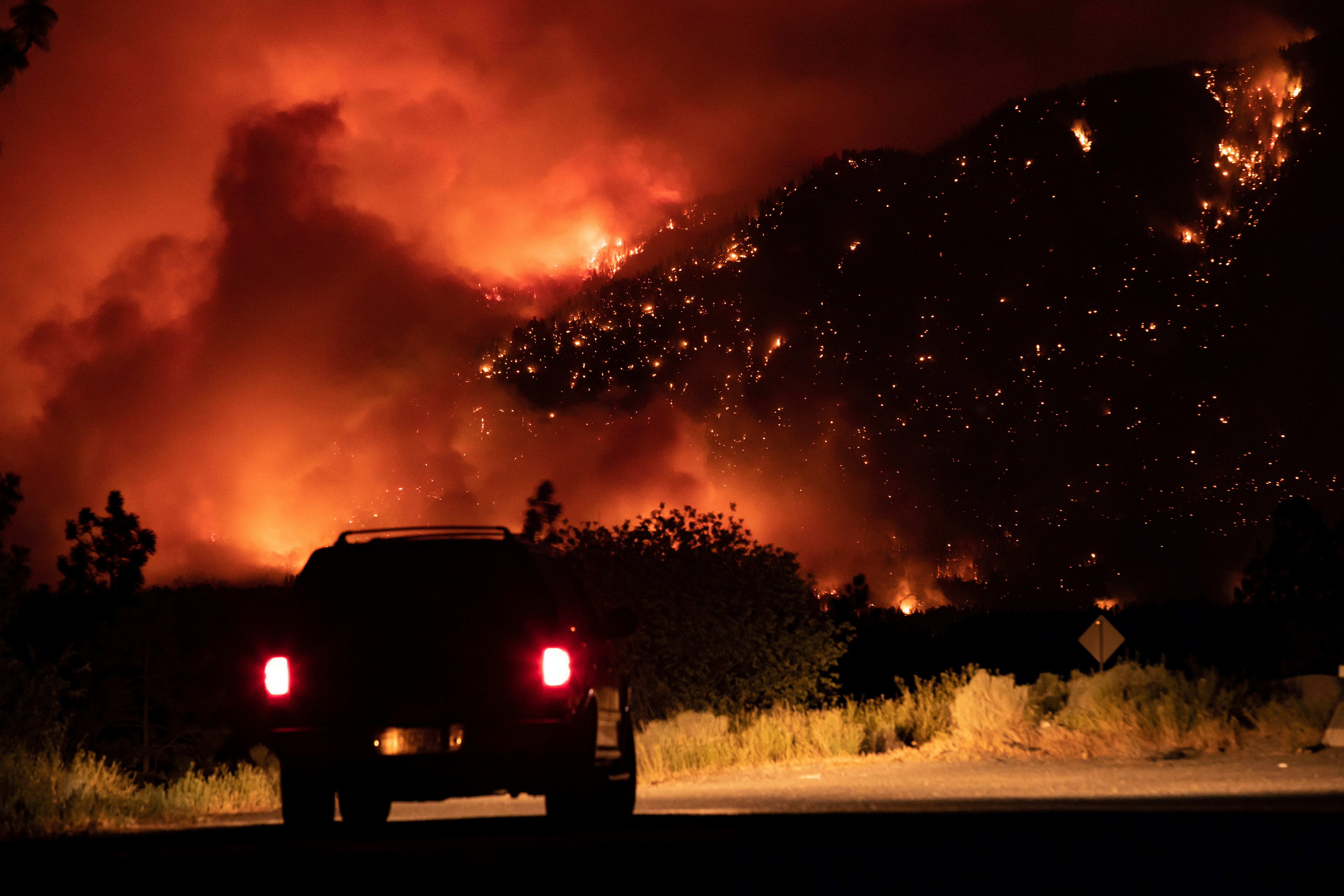
6 July: Bootleg Fire Oregon
Starting on 6 July and burning for around five weeks, the bootleg fire burned 413,765 acres (647 square miles) making it the third-largest fire in the history of Oregon since 1900. The blaze began amid high temperatures and was ignited by a lightning strike. Almost 70 houses were destroyed.
12 July: London Floods
On 12 July, a storm system which heavily impacted western Europe began its deluge over the south of the UK, with London particularly badly impacted. The rainfall was so intense that one month’s-worth of water plummeted from the sky in just over an hour.
A total of 47.8mm (2 inches) of rainfall in 24-hours was recorded in Kew, where the average monthly rainfall in July is just 44.5mm. Elsewhere there were reports of 3 inches of rain in 90 minutes.
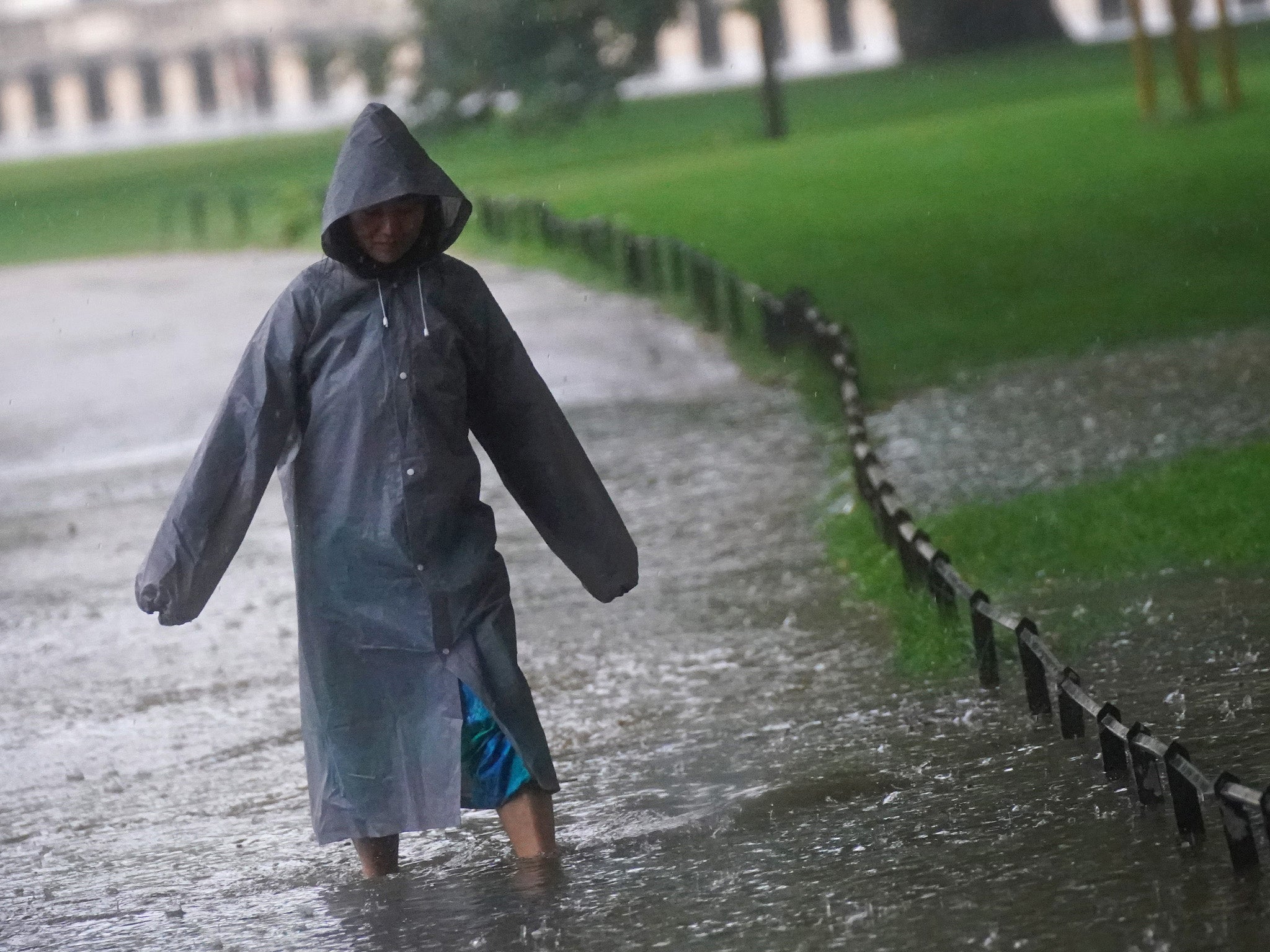
Homes were flooded, residents were evacuated from some areas, cars were submerged in water, and train and Tube services were severely disrupted as flooding on the lines caused cancellations and delays.
At Sloane Square in London, dramatic footage of water cascading down the stairs to the platforms showed the seriousness of the floods and highlighted the vulnerability of London’s infrastructure to extreme weather.
Experts told The Independent that due to the climate crisis, “the atmosphere can, and in general does, hold more water, so the same rainstorm is going to give you that much more rain.”
12 – 15 July: European floods
Germany and Belgium were among the hardest hit countries after heavy rainfall resulted in exceptional flooding which caused deaths and widespread damage. However, Austria, Croatia, the Czech Republic, France, Italy, Luxembourg, The Netherlands, Romania and Switzerland were all also affected.
Almost 200 people were killed in Germany, and Angela Merkel said “the German language doesn’t have words for the destruction that’s been wreaked”.
42 people were killed in Belgium.
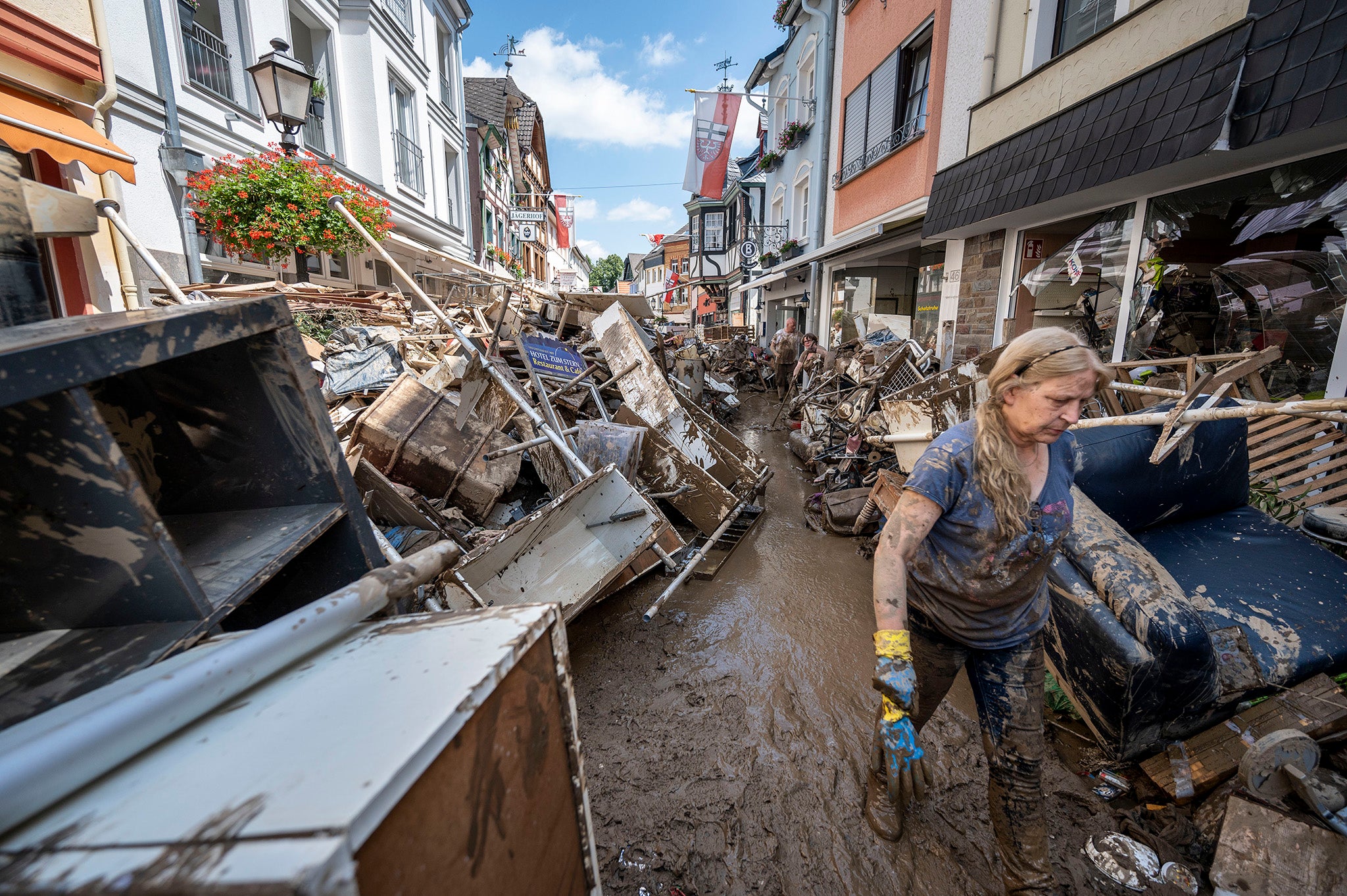
It is thought the floods caused around $15bn in insured losses and property damage. The flooding was Germany’s deadliest natural disaster in Germany since the North Sea flood of 1962.
20 July: Henan Province flooding China
Devastating floods in Henan Province followed weeks of heavy rain across the region, described as the heaviest in a thousand years. On 20 July, Zhengzhou, the provincial capital, recorded 201.9 millimetres (7.95 in) of rainfall within an hour. Horrifying footage revealed scenes of people trapped on the underground Metro railway system after it flooded, in which several people were killed.
In all, 302 people lost their lives due to the floods.
25 July: Belgium flooding
Just a week after intense flooding had already hit Belgium, another rainstorm brought yet more intense flooding to some parts of the country, washing away cars, and causing huge damage to buildings.
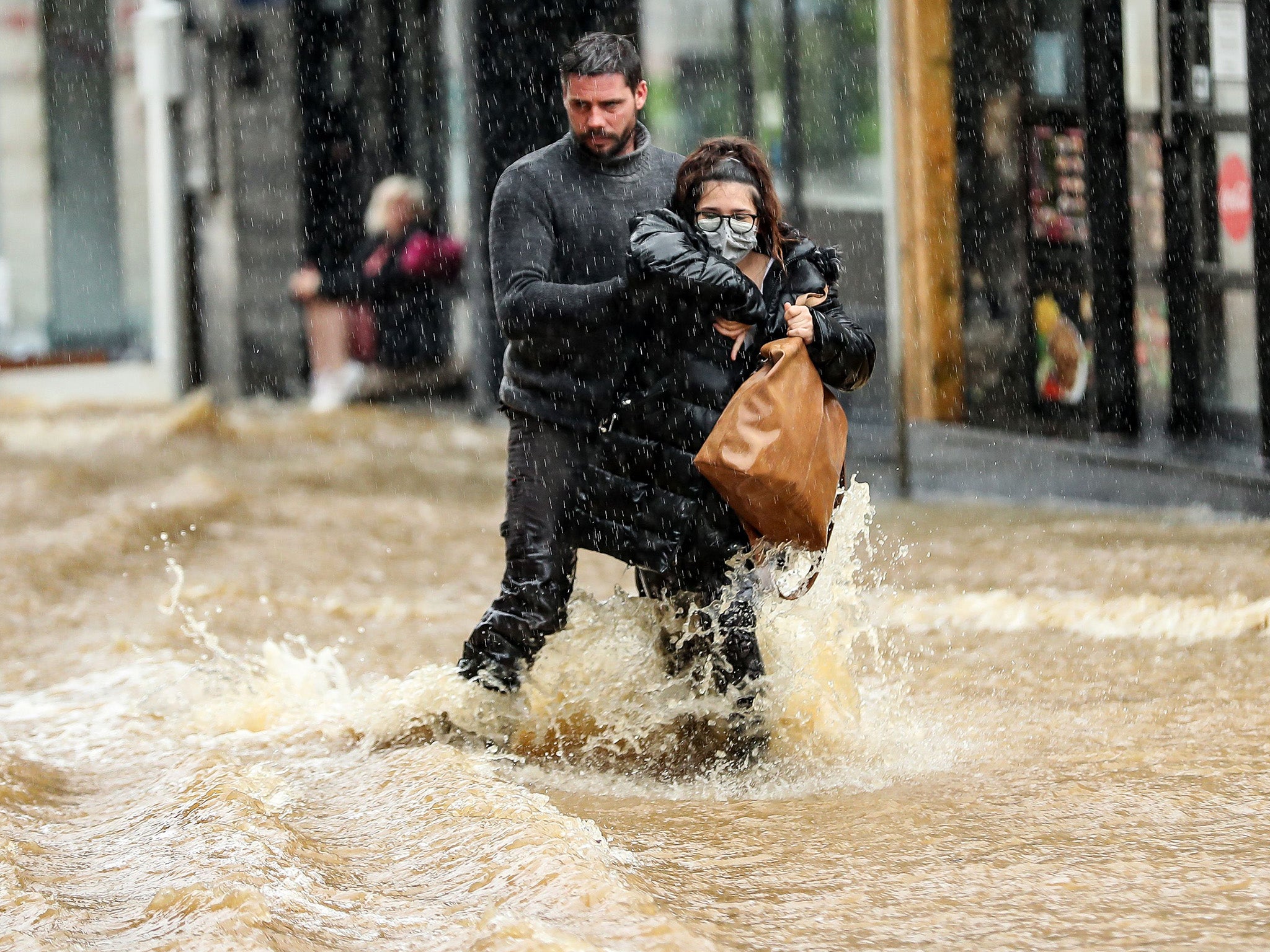
June, July, August: Summer wildfires
Hot on the heels of extreme flooding, other parts of Europe were hit by heatwaves which made them vulnerable to wildfires.
Fires erupted across large areas of North America, Siberia, eastern and central Mediterranean, and North Africa.
August’s total estimated emissions were the highest of the year, with an estimated 378Mt of carbon released into the atmosphere globally. More than half of the emissions came from fires in North America and Siberia, two of the worst affected regions.
Late July-Early August: Wildfires in Greece and Turkey
Wildfires forced thousands of people to flee their homes in parts of Greece and Turkey, tearing through dry forests and causing what Greek prime minister Kyriakos Mitsotakis described as a “nightmarish summer”.
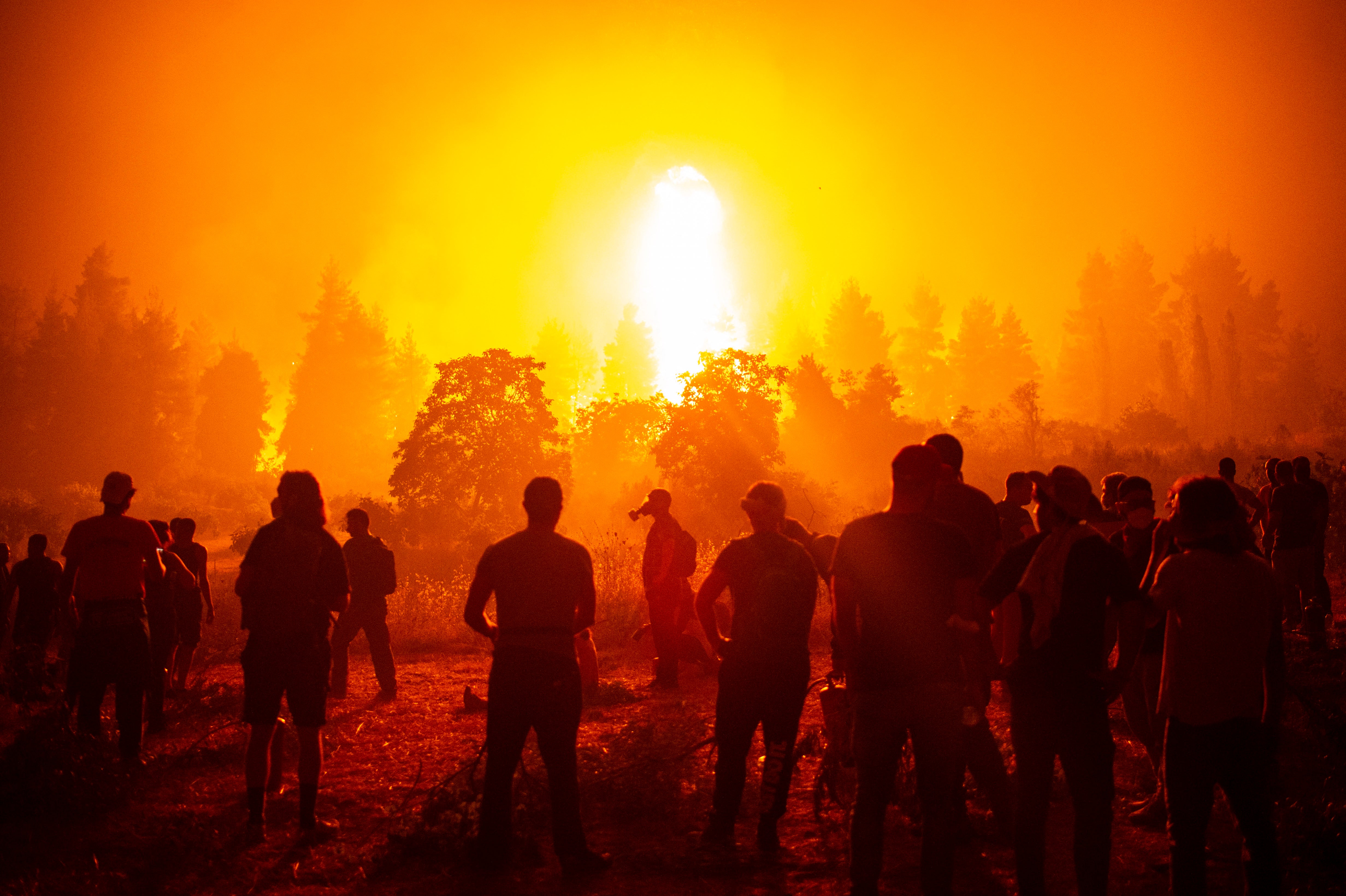
In July and August 2021, a series of more than two hundred wildfires burnt 1,700 square kilometres of forest in Turkey – the worst in the country’s history.
At least nine people were killed in Turkey and three in Greece.
The target for limiting global heating set out in the Paris Agreement is slipping beyond reach, the world’s leading authority on climate science warns, with the crisis already affecting every region of the planet.
Some of the impacts, such as global sea level rise, could be “irreversible for centuries to millennia”, according to the most comprehensive assessment yet from the UN’s Intergovernmental Panel on Climate Change (IPCC).
12 August: Sicily wildfires
After the island recorded Europe’s hottest-ever temperature, wildfires rapidly spread across the Italian island of Sicily, killing two people.
Flames destroyed trees and threatened homes in the centre and south of the region as more than 3,000 firefighters battled the blazes.
Meteorologists said the city of Syracuse, located on the island’s south-east coast, recorded a temperature of 48.8C, setting a new European heat record.
August 29: Hurricane Ida, US
115 people were killed in total and damage amounting to $65bn was caused by Hurricane Ida, which hit Jamaica, Cuba, Venezuela, Colombia and the US. It made landfall in the US in Louisiana, bringing winds of 150mph. It caused extensive flooding and a million people were left without power across the state. As it tracked North, the hurricane brought extensive flooding to New York City and New Jersey, killing 43 people.

1 September: Extreme weather increasing fivefold, says WMO
The number of extreme weather disasters recorded across the globe has increased nearly fivefold in the past 50 years, driven by the climate crisis a major UN assessment stated in September.
A total of 771 disasters linked to climate, weather or water extremes were recorded from 1970 to 1979, the report said. From 2010 to 2019, 3,165 such disasters were recorded.
13 October: Humanity not on course to rein-in emissions
The world is not on course to reduce the emission of planet-heating greenhouse gases to net zero by the year 2050, and with emission levels still on the rise, urgent action must be taken by governments around the world, the International Energy Agency warned in October – just a month before the Cop26 climate summit in Glasgow.
22 October: Nepal and India flooding
Almost 200 people were killed after heavy rains caused floods and landslides in Nepal and India after heavy rainfall which flooded roads, destroyed bridges and caused landslides which washed away several homes.
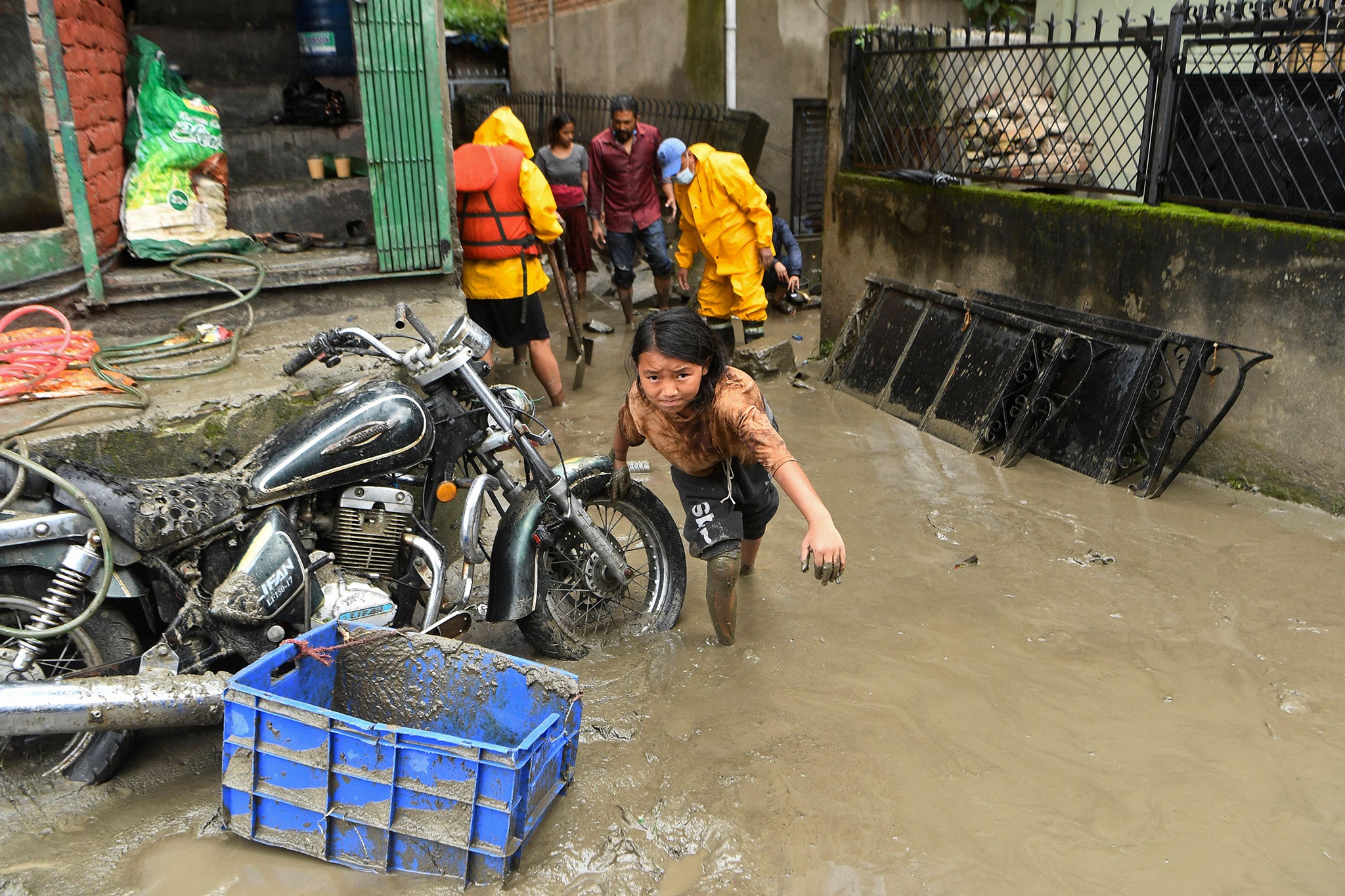
1-12 November: Cop26 Climate Summit, Glasgow
Hosted by the UK government in Glasgow, Scotland, with the aim of “Keeping 1.5C alive”, in reference to the average global temperature rise it would be best not to exceed by the end of this century, the global conference began with great expectations upon it.
While some progress was made, most notably in agreeing a more concerted phase out of coal, and greater effort to reverse deforestation, the commitments required to bring down fossil fuels from countries around the world were not agreed in line with a timescale which can keep temperature rises to 1.5C.
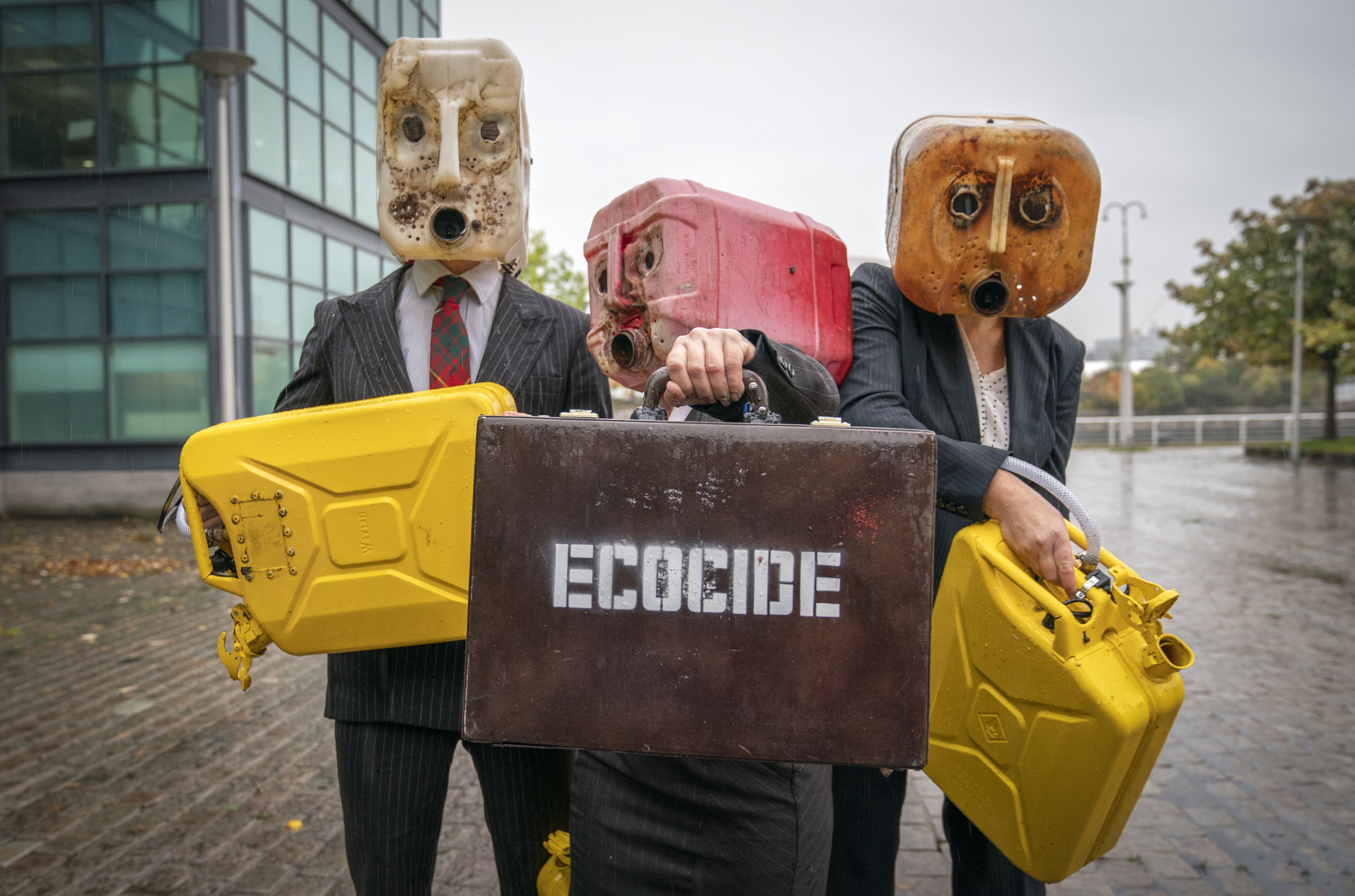
According to Climate Action Tracker, the results of the summit mean the global temperature will rise by 2.7C by the end of the century with current policies. However, the temperature would rise by 2.4C if only the pledges for 2030 are implemented, or by 2.1C if the long-term targets are also achieved, and by 1.8C if all countries’ announced targets were fully achieved.
26 November: Storm Arwen
Three people were killed and tens of thousands of people were left without power for days after an extratropical cyclone, named Storm Arwen, brought winds of up to 100mph, rain and drifting snow to Britain which tore down powerlines, uprooted trees and damaged transport infrastructure.
The storm caused the greatest level of disruption to the country since 2005, but the government warned that the climate crisis meant such events will become increasingly common in future.
Join our commenting forum
Join thought-provoking conversations, follow other Independent readers and see their replies
Comments